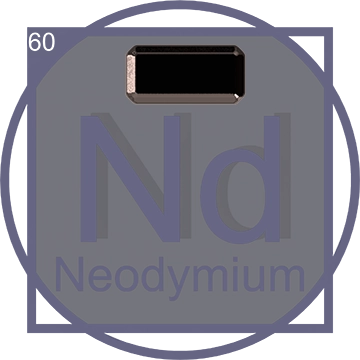Introduction
Dysprosium, with the symbol Dy and atomic number 66, is a lesser-known yet crucially important rare earth metal. It possesses unique magnetic properties that are vital in a range of modern technological applications. This comprehensive guide explores the various facets of Dysprosium, from its discovery and physical properties to its roles in science and industry.
Discovery

The discovery of Dysprosium dates back to 1886, when French chemist Paul Émile Lecoq de Boisbaudran identified it through spectroscopic methods. He extracted it from dysprosia, an oxide found in holmium oxide. The element was named from the Greek word 'dysprositos', meaning 'hard to get' or 'rare', reflecting its elusiveness and rarity.
Properties and Characteristics
- Physical Properties: Dysprosium is a bright, silvery metal that belongs to the lanthanide series. It is relatively soft, can be machined without sparking, and has a high melting point of approximately 1,412 degrees Celsius.
- Chemical Properties: It is stable in air at room temperature but reacts with water and dissolves readily in acids.
- Isotopes: Naturally occurring Dysprosium is composed of seven isotopes, among which Dy-164 is the most abundant.
Applications in Technology

Dysprosium's value in technological applications cannot be overstated. Its unique properties make it indispensable in several fields:
- Magnets: Dysprosium is used to manufacture high-performance magnets. These magnets are crucial in motors and generators for electric vehicles and wind turbines, where they enhance energy efficiency and performance.
- Nuclear Reactors: Due to its ability to absorb neutrons, it is used in nuclear reactors to control the reactor core's temperature and prevent overheating.
- Lighting and Displays: It is used in lighting systems and display technologies to produce brighter, more efficient lighting and clearer displays.

Global Supply and Demand
The demand for Dysprosium has escalated with the expansion of green technologies, particularly in the areas of clean energy and advanced electronics. However, its supply is limited and predominantly controlled by China, leading to strategic vulnerabilities and a push for recycling and finding alternative materials.
Extraction and Mining of Dysprosium
Dysprosium is primarily extracted through the mining of minerals such as monazite and bastnaesite, which contain multiple rare earth elements. The extraction process typically involves crushing the ore, milling, and employing various chemical processes to separate Dysprosium from other elements.

Major Mining Locations
- Baiyun Obo Mine, China
- Mountain Pass, USA
- Mount Weld, Australia
Associated Resources
Dysprosium is often found alongside other rare earth metals such as neodymium and praseodymium, which are also crucial for high-tech applications.
Modern Uses of Dysprosium
Today, Dysprosium is indispensable in various cutting-edge applications:
- Magnets for electric vehicles and wind turbines
- Lasers and commercial lighting systems
- Nuclear reactors as a neutron-absorbing material
The Future of Dysprosium

Scientific advancements could lead to even broader applications of Dysprosium, particularly in quantum computing and space exploration technologies. Research is ongoing to enhance the efficiency of Dysprosium-based materials in these areas.
For more detailed information about Dysprosium and its place in the periodic table, please visit our Periodic Table page.












